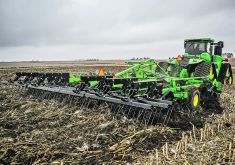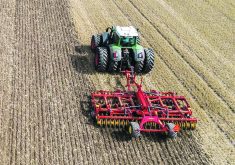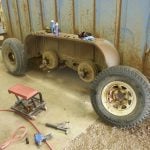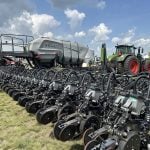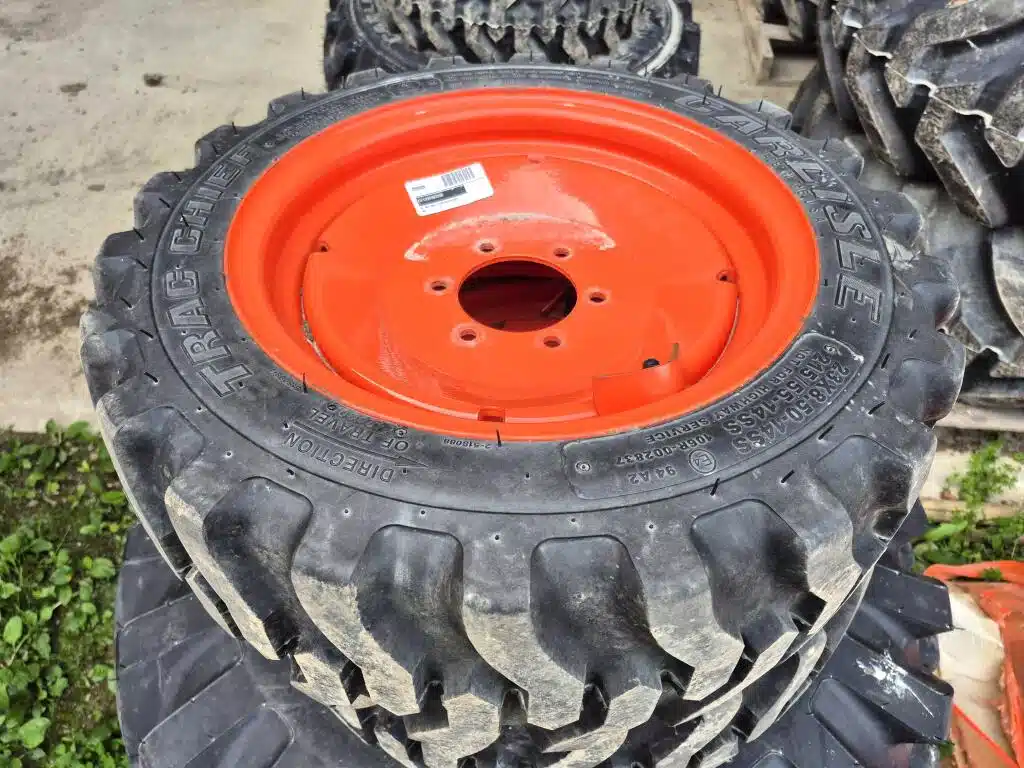With such a wide range of tires on the market, it’s critical to choose ones suitable for the jobs the tractor will do
When considering a new loader tractor, lifting capacity, horsepower and size are major factors. Easily overlooked are the specifications for the tires on which the tractor rides and how they can affect tractor performance.
“One thing that’s important for operators to understand is how proper ballasting, load ratings and tire pressure play a role in the performance of equipment,” said Kyle Dabrowski, product manager for agricultural products at Kubota.
“It’s really something that needs to be taken into consideration when purchasing the tractor and setting it up for different operations in the field.”
Read Also

New coal mine proposal met with old concerns
A smaller version of the previously rejected Grassy Mountain coal mine project in Crowsnest Pass is back on the table, and the Livingstone Landowners Group continues to voice concerns about the environmental risks.
There is a wide range of tires on the market, so it’s critical to pick the ones best suited for the jobs the tractor will do.
“It’s going to protect the equipment, improve operator experience and in the end, it’s also going to improve your productivity,” he added.
About 70 to 80 per cent of Kubota tractors end up with a loader attached, so the brand ships most tractors to dealers with temporary transport tires. That allows the customer and dealer to select the right tires to match the tractor’s intended primary function.
First, the tires must have a load rating that takes into account the ballasted weight of the tractor and the weight the loader will carry. That rating can change and two things can affect it. Inflation pressure is one of them.
“Even a 10 psi increase or decrease in tire pressure can change your load rating on an individual tire by thousands of pounds,” said Dabrowski.
To understand what tire pressures should be, an operator needs to know how much weight is on each tractor axle.
“In a perfect world, a tractor would be weighed for the application. Other than that, you’re playing a little bit of a guessing game,” he said. “Typically, you want 60 per cent of the weight on the rear and 40 per cent on the front.”
While most farms don’t have ready access to a scale capable of weighing a tractor, a good second choice is to look at the manufacturer’s specifications for total machine weight. It will provide a pretty close estimate of tire loads without anything in the loader bucket.
High tire inflation pressure will typically provide the highest load rating.
“With loader tractors you’d be running more at the higher end of the pressure stack in the table,” Dabrowski said. “It’s going to increase your load capacities, improve fuel economy and give you better steering performance. But the tradeoff is you do get reduced traction.”
High tire inflation pressures can maximize soil compaction during field operations. Reducing tire pressures during field operations reduces that and has other advantages.
“Lower tire pressure is going to give you more traction and less compaction if you’re working in the field,” said Dabrowski.
“It will also improve the operator comfort, because it gives you a bit more cushion. But the negative effects of that is it can severely limit the load capacity of the tires. It can also increase fuel consumption.
“Your steering performance might not be as good as with a higher pressure, because you have more ground resistance. So there are some tradeoffs.”
During roading, lower tire pressures can lead to increased temperature buildup in the tire and cause premature failure, especially if there is extra weight in the loader.
“If you’re roading versus just doing operations around the farm, a 10 m.p.h. difference in road speed change can make hundreds to thousands (of pounds) difference to a load rating of a tire,” he said.
When carrying loads, the weight on the tractor’s front axle is obviously increased, but using ballast correctly can minimize the impact of heavy lifting.
“One thing a lot of people don’t realize is when you’re putting weight on the rear of the tractor, you’re actually reducing the load on the front. Having rear ballast on a loader tractor is really important.”
Removable ballast on a three-point hitch attachment linkage is a quick and easy way to add ballast when carrying heavy loads. It can be easily removed when not needed.
Keeping a tire pressure gauge handy and adjusting inflation pressures to match the job at hand is one of the simplest ways to maximize tire life and reduce the strain on tractor components. Checking with the tire manufacturer’s published guidelines for inflation will help with that and provide suggestions for setting a good compromise pressure for day-to-day operations.
“Look at the tire spec pages for that particular tire. Make sure when you put the tractor under load you’re not exceeding the load rating and you’re adjusting your pressure to match what’s appropriate for the load on each tire,” said Dabrowski.
“You need to understand what the relative weight of the tractor is to utilize the tire charts. Really, it’s finding the right balance.”









